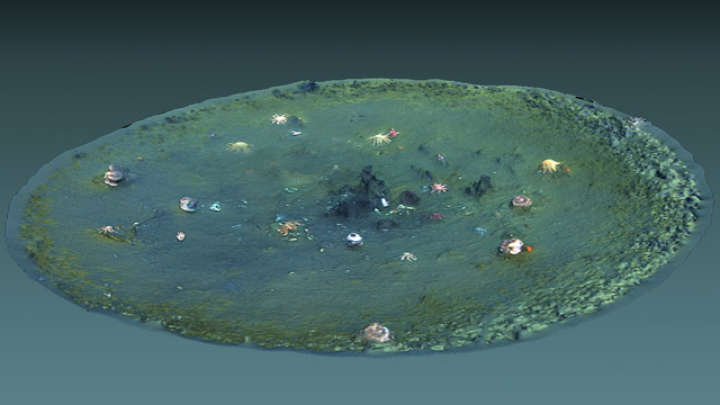Field Of Holes In Seafloor Off California Coast Puzzles Scientists
A deep-sea mystery has puzzled scientists for more than a decade: What is causing thousands of pockmarks on the seafloor off the coast of Big Sur, California?
Multi-beam surveys revealed approximately 5,000 craters dotting the bottom of the seafloor in what scientists call the largest known pockmark field in North America. The biggest are around 5 meters (16 feet) deep and 175 meters (almost 600 feet) wide. They have been known about for years but Eve Lundsten and Charles Paull from the Monterey Bay Aquarium Research Insititute (MBARI) found 15,000 micro-depressions to add to the peculiarity. The team presented their work at the American Geophysical Union conference in San Francisco this week.
“We were surprised by the discovery of the existence of the micro-depressions, and also the abundance of them,” said Lundsten, a senior research technician, to IFLScience “We didn’t know they were there, so their existence was the biggest surprise.”
Pockmarks found elsewhere in the world have been attributed to releases of methane gas or fluid but the team from MBARI don’t believe that’s the cause here; sonar data revealed no activity in the large craters for the last 50,000 years, cleanly nixing that possibility. The smaller pits, however, are fairly young and average roughly 10 meters (35 feet) across and 1 meter (3 feet) deep.
“We believe some of the larger pockmarks have been around for 400,000 years,” added Lundsten.

In nearly all the micro-depressions, remotely operated vehicles (ROV) dives found marine trash such as fishing gear, a whale skull, kelp holdfasts, trash bags, and buckets. These pits have “tails” of sediment moving southeast, suggesting the current is taking away the soft and fluffy upper layer.
During the ROV surveys, they mapped small sections of the entire pockmark field at 1-meter grid resolution. “It was in these higher resolution surveys that we discovered the micro depressions. As they are at least 3 times as abundant as the pockmarks, we estimate that there are ~15,000 of the micro-depressions co-mingled within the pockmark field,” said researcher Paull, a senior scientist.
Breaking it down even further, the team say about 20 percent of the micro-depressions (MDs) have exotic material like cobbles and 30 percent contain large anthropogenic objects, such as a storage trunk. The team suspect the trash and rocks are from kelp holdfasts or were dropped off the side of a boat.
“A hypothesis is that objects landing on the seafloor produce a habitat for fish,” said Paull. “Their activity stir up the soft fine-grained sediment, which slowly drifts away in the current and progressively excavate the depressions.”
A deeper understanding of this region is not just valuable for science but also for commercial endeavors, with an offshore wind farm proposed for the location. For now, more research is needed to confirm the hypothesis.
“While many people would like to say these micro-depressions are caused by trash, we have no conclusive evidence to say that,” said Lundsten. “What we can say is that they seem to be gathering light weight trash and marine debris into them, as well as providing habitat for fish and invertebrates.”




